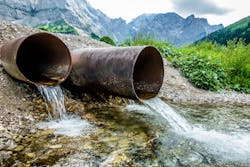Opportunity
For more than 10 years, Enthalpy Analytical, a Montrose Environmental Group company, has provided project management, consulting, and bioassay testing for an NPDES permit associated with a pump station at a large California Port. The sample is influenced by construction groundwater as well as stormwater runoff. Project support consists of scheduling and performing required sensitive species screening and routine quarterly monitoring, conducting data analysis and interpretation, and producing monitoring reports for the station effluent and associated receiving water. However, our abilities as more than “just a lab” have enabled us to help the client navigate through issues in permit compliance, develop appropriate treatment schemes, support regulatory interactions, and much more.
Challenge
One of the initial challenges this client faced was a series of routine compliance toxicity testing failures. We supported the toxicity reduction evaluation (TRE) process, conducted a successful toxicity identification evaluation (TIE), and advised on appropriate treatment solutions. Over the course of several years and as additional changes were made to facility operations, toxicity was observed again, requiring subsequent discrete rounds of toxicity identification evaluation.
Solution
Rather than assuming the cause of toxicity was the same each time, we let the data guide our iterative TIE process. Over the course of the project, several successful TIEs have been performed, each of which has led to adaptations in the testing regime and/or changes to pump station operations, resulting in reductions of cost through elimination of lengthy TRE or excessive accelerated testing regimes.
Over a two-year period of time, concurrent, targeted TIEs utilizing a novel treatment employed by Enthalpy have prevented the need for over 30 accelerated tests, realizing an estimated cost savings of several tens of thousands of dollars. The correct identification of the causes of toxicity (ranging from ammonia to metals to bicarbonate) combined with this targeted approach has allowed for the demonstration of consistent sources of observed effects and has led to modifications of the existing treatment system. Cost savings were also realized in cessation of ongoing compliance violation fees.
Enthalpy has also provided recommendations and regulatory support for altering the suite of species being tested to eliminate the need for additional concurrent TIEs. Enthalpy, in partnership with other project stakeholders, has provided comments and support for the renewal of the pump station’s NPDES permit.
Editor's Note: Scranton Gillette Communications and the SGC Water Group are not liable for the accuracy, efficacy and validity of the claims made in this piece. The views expressed in this content do not reflect the position of the editorial teams of Water & Wastes Digest, Water Quality Products and Storm Water Solutions.
